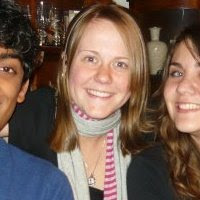Psychotic Disorders
1.Skitzo - 1%
decline in social or occupational function and 2/6 of symptoms or constant a or bizarre b that last 6 months+ +its not something else.
positive symptoms add, negative is like an absence.
a. hallucinations - perceptual
b. delisions - beliefs / bizzarre v not
c. disorganized speech/thought
d. disorganize/catatonic behavior
e. flat mood / apathy
f. decline in f(x) - btful mind, john nash
g. (NOT IN DSM) stimulus overload
• Men are usually diagnosed earlier
• estrogen reduces dopamine
• = across cultures
• socio-econ - higher in lower b/c skitzo causes lower and there is a bias
subtypes
✓ paranoid
✓ disorganized
✓ catatonic
✓ undifferentiated
✓ residual
THEORIES
1. kraeplin-
⁃ early in life
⁃ preogressive and irreversible intelectual deteriotation
⁃ dementia praecox, senility
⁃ psych, dont get better
2. v bleuler
⁃ develops @any time
⁃ breakdown of connections bw words, thots, feelings
⁃ skitzo, splitting of the mind
⁃ physiological, but could be brought on by psych
⁃ could recover
CAUSES
1. PHYSIOLOGICAL
⁃ electrical activity in brain stem or limbic system
⁃ - carry too much activity up to cortex, overload on cell assemblies shit
⁃ hi dopamine- greases pathway for more electric shit to go to cortex and makes worse!
⁃ drugs ^dope and cause skitzo symptoms
⁃ brain damage
⁃ prefrontal cortex- smaller
⁃ temporal cortex - language - smaller
⁃ hippocampus - long term memory
⁃ amygdala - smaller, less emotions
⁃ ventricles in brain - bigger ducts than normal. as brain dies, enlarges
⁃ Genetics
⁃ 10% of skitzo
⁃ BIO trauma
⁃ disease, poison, injury, reduce fx in brain
⁃ PRENATAL season of birth effect - 2nd trimester flu
⁃ PRENATAL bad diet, polio, bad vit A,
⁃ PRENATAL'd skitzos also often have minor physical abnormalities
⁃ PREGNANCY- difficulties- can cause structural problems (-) and possibly hi levels of dope(+)
⁃ blows to head
⁃ these areas of brain cause skitzo later because they arent fully developed yet
⁃ TREAT
⁃ DRUGS to reduce dope, arrest brain activity
⁃ neuroleptics : thorizine, haldol (blocks more)
⁃ work by block dope receptors on postsynaptic neurons so neurons cant be stimulated
⁃ can cause twitching - tardive dsykenesia 0 effects that occur later
⁃ atypical neuroleptics: +seratonin = down to dope
⁃ more effective, less side effects, can reduce depression
⁃ ECT - increase activity in frontal lobes
2. PSYCH
⁃ stress can worsen + symptoms
⁃ treatment doesnt work
⁃ behavior mod - operant - punish/reward -- too much clothing lady
⁃ reduce behavior, not symptoms
⁃ Psychoeducation educate on how to calm environment and coping required less meds! yay! very effective
⁃ LT - biochemically sometimes fixes self -
2.Brief psychotic
basically, one or more core symptoms of skitzo - from 1 day to 1 month- often after stressors - VERY MILD
3. Skitzofreniform
basically, two or more symptoms for 1 mo to 6 mo MILD
4. Skitzoaffective
basically, two or more symptoms plus depressive/manic yes decline in fx >6mo
5. Delusional
basically, one or more nonbizzare delusions
6. Shared Psycho
basically duh
PERSONALITY DISORDERS
- on axis II, personality and mental retardation (I is clinical disorders)
- revolve around pervasive/persistent problems w/ responding - consistent and extreme!
-serious prolonged problem with f(x)and happiness
CLUSTERS
A. Odd/Eccentric
1. Paranoid
⁃ mistrust w/o evidence, M>F
⁃ might have been b/c of stressor
2. Skitzoid
⁃ lack of interest in socialness, loners
⁃ neg symptoms of skitzo
⁃ oid=resembling
3. skitzotypal
⁃ illusions not delusions "i feel AS IF"
⁃ mild skitzo?
⁃ likely to be partially genetic link to skitzo-regular
⁃ nutrition is impt like in skitzo -red
4. these can infer more serious crap
5. helps understand partially
B. Erratic/Emotional
1. Borderline
⁃ instable
⁃ relations- from love to hate back to love quickly
⁃ emotions
⁃ identity
⁃ self mutilation (med by atypical neuro = clorazil = ^^ seratonin)
⁃ sharing/combo of other things
2. Histrionic
⁃ actors/shallow people
3. Narcisstic
⁃ i'm pretty
4. antisocial PD, APD
⁃ psycho/sociopath
⁃ no anxiety or guilt, pleasure seeking
⁃ cause emo/$ harm, not physical
⁃ talk way out of all
⁃ 3%men 1% womens 60$ of prison mens
⁃ phineas gage - also structural
⁃ no classical conditioning
C. ANXIOUS/FEARFUL
1. avoidant
⁃ if dont get close, dont get hurt
2. dependent
⁃ doesnt make decisions
⁃ W>M
⁃ might have been criticized early in life for being independent
3. obsessive compulsive
⁃ obsessed w/ organizing - doesnt actually do whole
⁃ no obsessions/compulsions
⁃ hoards
1. ADJUSTMENT disorders
⁃ problems adjusting to a stressor in environ, not serious
⁃ Depression
⁃ anxiety
⁃ conduct
⁃ w/ ____
⁃ use psychotherapy etc
⁃ antidepressent but not for long
2. IMPULSE CONTROL
⁃ klepto
⁃ triklo
⁃ also likely to have ocd
⁃ bicylcic- increase seratonin
⁃ pyrointermittent explosive
⁃ aggresive
⁃ gambling 5%
⁃ seratonin ^ = less impulsivity
⁃
DISORDERS appearing in infancy, childhood, adolesce
Disruptive Disorders
1. ADD/ADHD
⁃ inattention
⁃ hyperactivity
⁃ both must be before yr 7 and for at least 6 mos and interfere w/ social or academic
⁃ M>>>> F
⁃ 30-80% still show in adulthood
⁃ lower level of metabolism in brain and greatest def in prefrontal cortex and premotor cortex
⁃ underactive areas are in charge or inhibition of motor activity and attn
⁃ CAUSE
⁃ low oxygen in prefo - anoxia
⁃ infections in prenatal in 1st 12 weeks
⁃ maternal smoking
⁃ lead - wagon! haha
⁃ TREAT
⁃ ritalin, dexedrimne
2. CONDUCT DISORDERS
1) agression
2) destruction
3) deciet/theft
4) serios violate of rules
3. 6-16% m under 18 and -9% F

